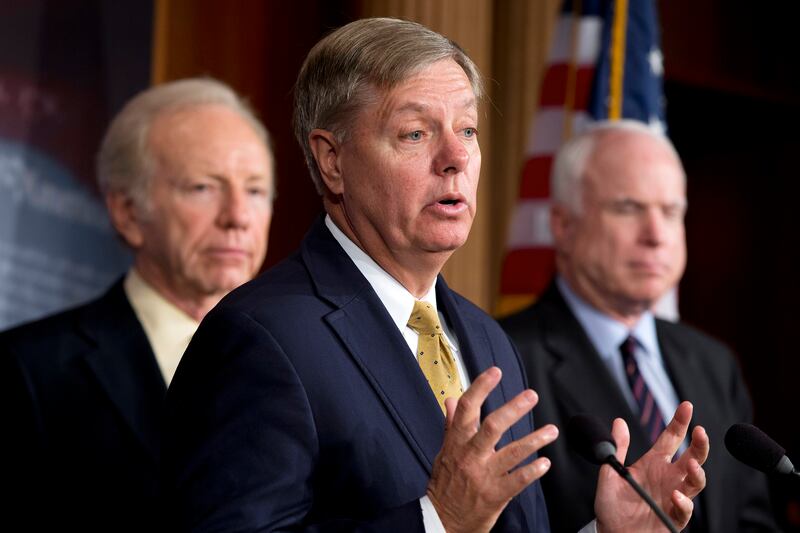It’s grade-school civics that the two parties in Washington represent the views of the people who sent them there, and usually, it’s true, or true enough. But a funny thing is happening on the way to the fiscal cliff, which is that Washington Republicans, according to a very interesting new poll, are not representing the positions of rank-and-file Republicans. So whose views are they representing? Good question. And here’s another good question: Why can’t Washington Republicans recognize how deeply unpopular their positions are and just get down to the business of making a deal that would work and would have broad support in the country? Hmmm.

The poll comes from the McClatchy News Service and was conducted by Marist. It asked respondents what they would and would not support as part of a grand fiscal bargain. The top-line results are typical: People first and foremost want to see taxes go up on the high end.
But here’s the good stuff. Breaking down results to Republican respondents only, their positions are as follows. By 47-37, they oppose letting the current payroll tax cut expire (an Obama position). By 68-26, they’re against cutting Medicare spending. By 61-33, they oppose cutting Medicaid spending (yes, Medicaid spending!). By 66-28, they’re against eliminating the home-mortgage interest deduction. By 72-25, they oppose eliminating the charitable contribution deduction. And by 56-44, less overwhelming but still very much a landslide in political terms, they just say no to raising the Medicare eligibility age.
Please read those numbers over one more time. That’s Republicans. Supporting “liberal” positions by huge margins. Okay, the two deductions, for mortgage and charity, aren’t necessarily liberal positions only, but in the current context, it’s prominent Republicans like Paul Ryan and John McCain and others who keep saying that the only tax reform they’ll consider is the type in which marginal rates are lowered and these loopholes are closed. So even there, Republican voters are opposing their own leaders. But look at that Medicaid number in particular. Kind of amazing. Gee, do you suppose that Republicans, who do tend a bit more toward the geriatric end of the age scale, understand that Medicaid pays for nursing-home care for middle-class people?
Now, there are different ways to interpret such numbers. One is to dismiss them. People want to have their cake and eat it too, Republicans no less than others, so they want benefits without having to pay for them. And, naturally, their first instinct is to say yes to higher taxes for people who aren’t them. So in that sense these results are unsurprising.
But there is another way to look at them, too, at this moment of high suspense and intense ideological showdown. The Republicans in Washington are taking these stands, these allegedly “bold” stands, demanding deep cuts in domestic spending and entitlement. But it turns out that they are not taking them on behalf of their own voters! So for whom are they taking these stands?
Obviously, they’re doing this for their donor class, for their ideological gurus like Grover Norquist, and to a lesser but nevertheless important extent in order to impress and curry favor with the Washington establishment and the mainstream media, which decided long ago that cutting Medicare and Medicaid are the only ways for politicians to demonstrate “responsibility.” And they’re doing this because they’re terrified of facing primary challenges from people even more right-wing than they are. Never forget this last fact—this is really, at bottom, what is driving the postures of many Republican senators and House members here.
Or let’s put it another way. The American people, including apparent majorities of Republicans, more or less agree on an outline of a deal. Raise the higher-end taxes. Make some cuts, but not belligerent ones, to both the domestic discretionary and the defense budgets (the Pentagon budget has increased in the past decade more than any decade in history, except during the big wars). Make some modest changes on some tax loopholes and deductions—for example, reducing the deduction that owners of expensive homes can take. Make cuts—real, but admittedly unsexy and un-headline-grabby, hence their limited public-relations utility—to Medicare, where the real savings are to be found in reimbursement rates, especially to specialists, and in rejiggering the optional private plans like Medicare Advantage, which often cost the government more money than regular Medicare does to provide the same services to enrollees. This is, wouldn’t you know, absurdly complicated, but Peter Orszag explains it with a reasonable degree of clarity here.
But of course, Lindsey Graham can’t score many points with the Tea Partiers back home—that 30-something percent of Republicans who constitute the minorities above—by strutting onto the Fox set on a Sunday morning and crowing, “By jiminy, we’ve completely altered the risk-adjustment process that’s used for Medicare Advantage reimbursements!” And that really is the problem here: while majorities of rank-and-file Republicans express pretty reasonable opinions about most of the great questions of the moment, their representatives in Washington are ignoring them and instead striving to please the more extreme minority.
There’s a grand bargain waiting to be made, all right. This McClatchy-Marist poll tells us that a middle-ground approach would be popular across the board. But the simple truth is that the dynamics at play within the Republican Party won’t permit one.




